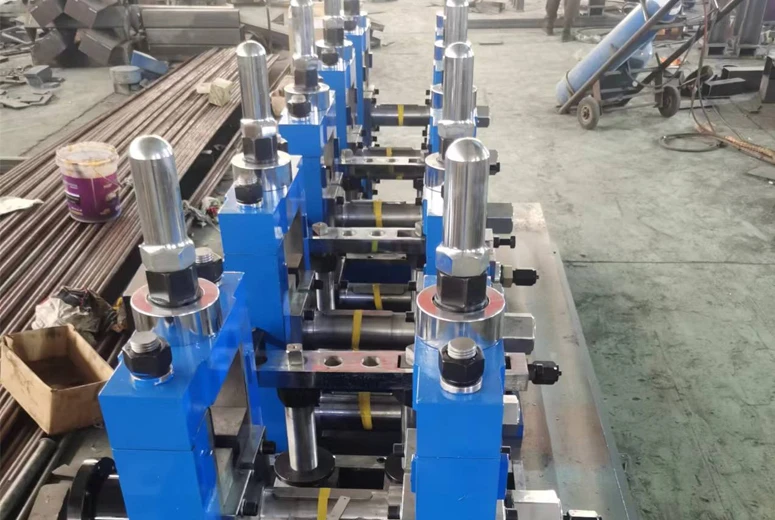Understanding the Process and Benefits of Transfer Molding Machines in Manufacturing
Transfer Molding Machine An Overview
Transfer molding is a widely used manufacturing process that plays a vital role in producing various plastic products, particularly in industries such as automotive, electrical, and consumer goods. The transfer molding machine is the heart of this process, responsible for shaping and forming materials into finished components. This article delves into the working principle, advantages, applications, and advancements in transfer molding technology.
Working Principle
Transfer molding involves the use of a heating chamber where a predetermined amount of raw material, usually in the form of thermosetting plastic, is preheated before being transferred into a mold cavity. The process typically consists of several steps
1. Material Loading Raw material, or rubber pellets, are placed in a container called the transfer pot. 2. Heating The material is heated until it becomes fluid, allowing for easier flow during the molding process. 3. Transfer A plunger or ram applies pressure to push the softened material through a sprue into the mold cavity. 4. Curing Once the mold is filled, it is maintained under heat and pressure for a specific period to cure the material and allow it to harden into the final shape. 5. Ejection After curing, the mold is opened, and the finished product is ejected.
Advantages of Transfer Molding Machines
Transfer molding machines offer several benefits that make them a preferred choice in manufacturing
- Precision This process allows for high precision in shaping intricate designs, which is essential for producing complex components. - Material Conservation Since the process allows for the reuse of excess material, it minimizes waste, making it more economical. - Versatility Transfer molding is adaptable to a wide range of materials, including various thermosetting plastics and elastomers, providing manufacturers with flexibility in production. - Cost-Effectiveness While the initial investment in a transfer molding machine can be significant, the long-term savings in material costs and production efficiency often outweigh these costs.
Applications
transfer molding machine

Transfer molding machines are employed in numerous industries and applications including
- Automotive Components Essential parts such as electrical connectors and insulation materials are often produced through transfer molding due to their durability and resistance. - Electrical Insulation Transfer molding is widely used for manufacturing electrical components like circuit boards and encapsulating materials where thermal stability and electrical insulation are crucial. - Consumer Products Many everyday items, from household appliances to sporting goods, utilize components manufactured via transfer molding.
Recent Advancements
In recent years, the transfer molding process has witnessed significant advancements in technology, leading to enhanced efficiency and capabilities. Innovations such as computer numerical control (CNC) machines have improved the accuracy of mold designs, while automation in the loading and ejection phases has increased production speed.
Moreover, the development of smart materials that can change properties during the molding process has opened new avenues for product innovation. These materials enable manufacturers to design products with specific features tailored to the needs of consumers or for particular applications.
Conclusion
Transfer molding machines have established themselves as indispensable tools in the manufacturing industry, offering precision, versatility, and efficiency. As technology continues to evolve, the potential for further enhancements in transfer molding processes seems promising, ensuring its relevance in modern manufacturing. With its broad range of applications and benefits, transfer molding remains a cornerstone of producing high-quality plastic products and components that meet the demands of today’s market.
In summary, as industries continue to seek improved methods for producing reliable and cost-effective components, the transfer molding machine stands out as a paramount solution, serving diverse needs across various sectors.
-
High Frequency Straight Seam Welded Pipe Production Line-BzZhou Xinghua Machinery Equipment Manufacturing Co., LTD.|Precision Welding, High EfficiencyNewsJul.30,2025
-
High Frequency Straight Seam Welded Pipe Production Line|BzZhou Xinghua|Precision Welding&EfficiencyNewsJul.30,2025
-
High Frequency Straight Seam Welded Pipe Production Line - BzZhou Xinghua|Precision Engineering&EfficiencyNewsJul.30,2025
-
High-Frequency Straight Seam Welded Pipe Production Line-BzZhou Xinghua Machinery Equipment Manufacturing Co., LTD.NewsJul.30,2025
-
High-Frequency Straight Seam Welded Pipe Production Line-BzZhou Xinghua Machinery Equipment Manufacturing Co., LTD.|Precision Manufacturing, High EfficiencyNewsJul.30,2025
-
High Frequency Straight Seam Welded Pipe Production Line-BzZhou Xinghua Machinery Equipment Manufacturing Co., LTD.|Precision Steel Pipe Manufacturing&Industrial EfficiencyNewsJul.29,2025


